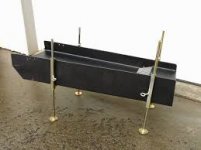Bronze
Full Member
- Jun 21, 2013
- 217
- 557
- Detector(s) used
- Garrett AT pro, Keene "3 dredge, Jobe yellow jacket, "36 Prospector Bazooka, a shovel, a pan and a worn out back.
- Primary Interest:
- All Treasure Hunting
Has anyone ever tried testing the BGT in deep water? I am not talking like 5ft down but at least completely submerged, maybe "6-"8 inches.
All of my rivers and creeks are at high water mark and a few of the spots I dig in are under about 8ft of water. So now I am having trouble with with getting set up as what would be normally perfect, its now a huge struggle to get something decent set up.
So I am just curious if dropping the BGT all the way under water is a problem?
All of my rivers and creeks are at high water mark and a few of the spots I dig in are under about 8ft of water. So now I am having trouble with with getting set up as what would be normally perfect, its now a huge struggle to get something decent set up.
So I am just curious if dropping the BGT all the way under water is a problem?



 Yup, it works fine. More importantly, the wire bale in the back with a tether will keep your BGT from floating off down the stream.
Yup, it works fine. More importantly, the wire bale in the back with a tether will keep your BGT from floating off down the stream.



